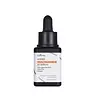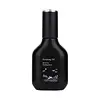What's inside
What's inside
 Key Ingredients
Key Ingredients

 Benefits
Benefits

 Concerns
Concerns

No concerns
 Ingredients Side-by-side
Ingredients Side-by-side

Water
Skin ConditioningNiacinamide 20%
SmoothingDipropylene Glycol
HumectantMethylpropanediol
SolventPropanediol
SolventArbutin
AntioxidantGlycerin
HumectantZinc PCA
HumectantSodium PCA
HumectantPortulaca Oleracea Extract
Skin ConditioningSodium Hyaluronate
HumectantSodium Acetylated Hyaluronate
HumectantHydrolyzed Hyaluronic Acid
HumectantHydrolyzed Sodium Hyaluronate
Skin ConditioningHyaluronic Acid
HumectantHydroxypropyltrimonium Hyaluronate
Potassium Hyaluronate
Skin ConditioningSodium Hyaluronate Crosspolymer
HumectantPinus Palustris Leaf Extract
TonicUlmus Davidiana Root Extract
Skin ConditioningOenothera Biennis Flower Extract
AstringentPueraria Lobata Root Extract
HumectantAmmonium Acryloyldimethyltaurate/Vp Copolymer
Adenosine
Skin ConditioningDipotassium Glycyrrhizate
HumectantTromethamine
BufferingButylene Glycol
HumectantAcrylates/C10-30 Alkyl Acrylate Crosspolymer
Emulsion Stabilising1,2-Hexanediol
Skin ConditioningHydroxyacetophenone
AntioxidantWater, Niacinamide 20%, Dipropylene Glycol, Methylpropanediol, Propanediol, Arbutin, Glycerin, Zinc PCA, Sodium PCA, Portulaca Oleracea Extract, Sodium Hyaluronate, Sodium Acetylated Hyaluronate, Hydrolyzed Hyaluronic Acid, Hydrolyzed Sodium Hyaluronate, Hyaluronic Acid, Hydroxypropyltrimonium Hyaluronate, Potassium Hyaluronate, Sodium Hyaluronate Crosspolymer, Pinus Palustris Leaf Extract, Ulmus Davidiana Root Extract, Oenothera Biennis Flower Extract, Pueraria Lobata Root Extract, Ammonium Acryloyldimethyltaurate/Vp Copolymer, Adenosine, Dipotassium Glycyrrhizate, Tromethamine, Butylene Glycol, Acrylates/C10-30 Alkyl Acrylate Crosspolymer, 1,2-Hexanediol, Hydroxyacetophenone
Water
Skin ConditioningGlycerin
HumectantButylene Glycol
HumectantGlycereth-26
HumectantNiacinamide
SmoothingSodium Polyacryloyldimethyl Taurate
Emulsion StabilisingCaprylyl Glycol
EmollientDicaprylyl Ether
EmollientAcrylates/C10-30 Alkyl Acrylate Crosspolymer
Emulsion StabilisingDimethicone/Vinyl Dimethicone Crosspolymer
Skin ConditioningHydroxyacetophenone
AntioxidantPentylene Glycol
Skin ConditioningTromethamine
BufferingCamellia Sinensis Leaf Extract
AntimicrobialDipropylene Glycol
HumectantMaltodextrin
AbsorbentEthylhexylglycerin
Skin ConditioningPolysilicone-15
UV FilterCaramel
Cosmetic ColorantAdenosine
Skin ConditioningPolyglyceryl-10 Dilaurate
Xanthan Gum
EmulsifyingEclipta Prostrata Extract
Skin ConditioningCoccinia Indica Fruit Extract
Skin ConditioningDisodium EDTA
Silica
AbrasiveMethylpropanediol
SolventPanthenol
Skin ConditioningHippophae Rhamnoides Fruit Extract
Skin ConditioningButyrospermum Parkii Butter Extract
Skin ConditioningPolyglyceryl-10 Myristate
Skin Conditioning1,2-Hexanediol
Skin ConditioningCaprylic/Capric Triglyceride
MaskingMacadamia Ternifolia Seed Oil
EmollientPanax Ginseng Berry Extract
Skin ConditioningEthylhexyl Palmitate
EmollientCetyl Ethylhexanoate
EmollientPhellodendron Amurense Bark Extract
Skin ConditioningCoptis Japonica Extract
AntimicrobialScutellaria Baicalensis Root Extract
AstringentScrophularia Buergeriana Extract
Skin ConditioningPhytosteryl/Behenyl/Octyldodecyl Lauroyl Glutamate
Skin ConditioningCholesterol
EmollientPiper Methysticum Root Extract
Skin ConditioningGardenia Florida Fruit Extract
Skin ConditioningBrassica Campestris Sterols
EmollientHydrogenated Lecithin
EmulsifyingAcetyl Hexapeptide-8
HumectantFructose
HumectantSaccharomyces Ferment Filtrate
HumectantPolyglyceryl-10 Oleate
Skin ConditioningSodium Hyaluronate
HumectantCentella Asiatica Extract
CleansingGlucose
HumectantPotassium Cetyl Phosphate
EmulsifyingCeramide NP
Skin ConditioningBeta-Glucan
Skin ConditioningHydrolyzed Hyaluronic Acid
HumectantHydroxypropyltrimonium Hyaluronate
Sodium Hyaluronate Crosspolymer
HumectantAsiatic Acid
Skin ConditioningAsiaticoside
AntioxidantSodium Acetylated Hyaluronate
HumectantCeramide Ns
Skin ConditioningMadecassic Acid
Skin ConditioningMadecassoside
AntioxidantCeramide EOP
Skin ConditioningWater, Glycerin, Butylene Glycol, Glycereth-26, Niacinamide, Sodium Polyacryloyldimethyl Taurate, Caprylyl Glycol, Dicaprylyl Ether, Acrylates/C10-30 Alkyl Acrylate Crosspolymer, Dimethicone/Vinyl Dimethicone Crosspolymer, Hydroxyacetophenone, Pentylene Glycol, Tromethamine, Camellia Sinensis Leaf Extract, Dipropylene Glycol, Maltodextrin, Ethylhexylglycerin, Polysilicone-15, Caramel, Adenosine, Polyglyceryl-10 Dilaurate, Xanthan Gum, Eclipta Prostrata Extract, Coccinia Indica Fruit Extract, Disodium EDTA, Silica, Methylpropanediol, Panthenol, Hippophae Rhamnoides Fruit Extract, Butyrospermum Parkii Butter Extract, Polyglyceryl-10 Myristate, 1,2-Hexanediol, Caprylic/Capric Triglyceride, Macadamia Ternifolia Seed Oil, Panax Ginseng Berry Extract, Ethylhexyl Palmitate, Cetyl Ethylhexanoate, Phellodendron Amurense Bark Extract, Coptis Japonica Extract, Scutellaria Baicalensis Root Extract, Scrophularia Buergeriana Extract, Phytosteryl/Behenyl/Octyldodecyl Lauroyl Glutamate, Cholesterol, Piper Methysticum Root Extract, Gardenia Florida Fruit Extract, Brassica Campestris Sterols, Hydrogenated Lecithin, Acetyl Hexapeptide-8, Fructose, Saccharomyces Ferment Filtrate, Polyglyceryl-10 Oleate, Sodium Hyaluronate, Centella Asiatica Extract, Glucose, Potassium Cetyl Phosphate, Ceramide NP, Beta-Glucan, Hydrolyzed Hyaluronic Acid, Hydroxypropyltrimonium Hyaluronate, Sodium Hyaluronate Crosspolymer, Asiatic Acid, Asiaticoside, Sodium Acetylated Hyaluronate, Ceramide Ns, Madecassic Acid, Madecassoside, Ceramide EOP
 Reviews
Reviews

Ingredients Explained
These ingredients are found in both products.
Ingredients higher up in an ingredient list are typically present in a larger amount.
1,2-Hexanediol is a synthetic liquid and another multi-functional powerhouse.
It is a:
- Humectant, drawing moisture into the skin
- Emollient, helping to soften skin
- Solvent, dispersing and stabilizing formulas
- Preservative booster, enhancing the antimicrobial activity of other preservatives
Acrylates/C10-30 Alkyl Acrylate Crosspolymer is a synthetic polymer. It is used to thicken and improve the texture of products. Due to its properties, it can prevent water and oil ingredients from separating.
Adenosine is in every living organism. It is one of four components in nucleic acids that helps store our DNA.
Adenosine has many benefits when used. These benefits include hydrating the skin, smoothing skin, and reducing wrinkles. Once applied, adenosine increases collagen production. It also helps with improving firmness and tissue repair.
Studies have found adenosine may also help with wound healing.
In skincare products, Adenosine is usually derived from yeast.
Learn more about AdenosineButylene Glycol (or BG) is used within cosmetic products for a few different reasons:
Overall, Butylene Glycol is a safe and well-rounded ingredient that works well with other ingredients.
Though this ingredient works well with most skin types, some people with sensitive skin may experience a reaction such as allergic rashes, closed comedones, or itchiness.
Learn more about Butylene GlycolDipropylene Glycol is a synthetically created humectant, stabilizer, and solvent.
This ingredient helps:
Dipropylene glycol is technically an alcohol, but it belongs to the glycol family (often considered part of the ‘good’ alcohols). This means it is hydrating and gentle on skin unlike drying solvent alcohols like denatured alcohol.
As a masking agent, Dipropylene Glycol can be used to cover the smell of other ingredients. However, it does not have a scent.
Studies show Dipropylene Glycol is considered safe to use in skincare.
Learn more about Dipropylene GlycolGlycerin is already naturally found in your skin. It helps moisturize and protect your skin.
A study from 2016 found glycerin to be more effective as a humectant than AHAs and hyaluronic acid.
As a humectant, it helps the skin stay hydrated by pulling moisture to your skin. The low molecular weight of glycerin allows it to pull moisture into the deeper layers of your skin.
Hydrated skin improves your skin barrier; Your skin barrier helps protect against irritants and bacteria.
Glycerin has also been found to have antimicrobial and antiviral properties. Due to these properties, glycerin is often used in wound and burn treatments.
In cosmetics, glycerin is usually derived from plants such as soybean or palm. However, it can also be sourced from animals, such as tallow or animal fat.
This ingredient is organic, colorless, odorless, and non-toxic.
Glycerin is the name for this ingredient in American English. British English uses Glycerol/Glycerine.
Learn more about GlycerinHydrolyzed Hyaluronic Acid is a form of hyaluronic acid. It is created by the hydrolysis of hyaluronic acid with a high molecular weight. Once created, Hydrolyzed Hyaluronic Acid has a low molecular weight.
Low molecular weight HA has been shown to hydrate and increase elasticity of the skin. Increasing elasticity is also associated with reduction of wrinkle depth.
One study found topical low molecular weight hyaluronic acid may be considered for the treatment of rosacea in the adult population. However, we always recommend speaking with a professional about your skin concerns.
Hyaluronic acids are a humectant. This means they draw moisture from the air. Hyaluronic acids help moisturize, soothe, and protect the skin.
Read more about other common forms of hyaluronic acid:
Learn more about Hydrolyzed Hyaluronic AcidHydroxyacetophenone is antioxidant with skin conditioning and soothing properties. It also boosts the efficiency of preservatives.
This ingredient is not irritating or sensitizing.
This form of hyaluronic acid is produced through fermentation.
According to a manufacturer, it has a positive charge by ionic binding to help moisturize and give hair a smooth feel. This is why you'll find this ingredient in shampoos and body washes.
Methylpropanediol is a synthetic solvent and humectant.
As a solvent, it helps dissolve other ingredients, helping to evenly distribute ingredients throughout the product. This ingredient has also been shown to have antimicrobial properties which makes it a preservative booster.
Methylpropanediol is able to add a bit of moisture to the skin. It also helps other ingredients be better absorbed into the skin, such as salicylic acid.
Learn more about MethylpropanediolNiacinamide is a multitasking form of vitamin B3 that strengthens the skin barrier, reduces pores and dark spots, regulates oil, and improves signs of aging.
And the best part? It's gentle and well-tolerated by most skin types, including sensitive and reactive skin.
You might have heard of "niacin flush", or the reddening of skin that causes itchiness. Niacinamide has not been found to cause this.
In very rare cases, some individuals may not be able to tolerate niacinamide at all or experience an allergic reaction to it.
If you are experiencing flaking, irritation, and dryness with this ingredient, be sure to double check all your products as this ingredient can be found in all categories of skincare.
When incorporating niacinamide into your routine, look out for concentration amounts. Typically, 5% niacinamide provides benefits such as fading dark spots. However, if you have sensitive skin, it is better to begin with a smaller concentration.
When you apply niacinamide to your skin, your body converts it into nicotinamide adenine dinucleotide (NAD). NAD is an essential coenzyme that is already found in your cells as "fuel" and powers countless biological processes.
In your skin, NAD helps repair cell damage, produce new healthy cells, support collagen production, strengthen the skin barrier, and fight environmental stressors (like UV and pollution).
Our natural NAD levels start to decline with age, leading to slower skin repair, visible aging, and a weaker skin barrier. By providing your skin niacinamide, you're recharging your skin's NAD levels. This leads to stronger, healthier, and younger looking skin.
Another name for vitamin B3 is nicotinamide. This vitamin is water-soluble and our bodies don't store it. We obtain Vitamin B3 from either food or skincare. Meat, fish, wheat, yeast, and leafy greens contain vitamin B3.
The type of niacinamide used in skincare is synthetically created.
Learn more about NiacinamideSodium Acetylated Hyaluronate is a type of Hyaluronic Acid.
Hyaluronic Acids help moisturize, soothe, and protect the skin.
Read about common types of Hyaluronic Acid here:
Sodium Hyaluronate
Hydrolyzed Hyaluronic Acid
Hyaluronic Acid
Sodium Hyaluronate is hyaluronic acid's salt form. It is commonly derived from the sodium salt of hyaluronic acid.
Like hyaluronic acid, it is great at holding water and acts as a humectant. This makes it a great skin hydrating ingredient.
Sodium Hyaluronate is naturally occurring in our bodies and is mostly found in eye fluid and joints.
These are some other common types of Hyaluronic Acid:
Learn more about Sodium HyaluronateSodium Hyaluronate Crosspolymer is a type of hyaluronic acid. In fact, it is modified version of hyaluronic acid.
The structure of Sodium Hyaluronate Crosspolymer allows it to stay in the skin's top layer for a longer period of time. This allows for even more hydration and humectant action than hyaluronic acid.
These are some other common types of Hyaluronic Acid:
Learn more about Sodium Hyaluronate CrosspolymerTromethamine helps balance the pH and improve the texture of a product. It is synthetically created.
As an emulsifier, Tromethamine prevents oil and water ingredients from separating. This helps stabilize the product and elongate a product's shelf life. Tromethamine also makes a product thicker.
Tromethamine helps balance the pH level of a product. Normal pH level of skin is slightly acidic (~4.75-5.5). The acidity of our skin is maintained by our glands and skin biome. Being slightly acidic allows our skin to create an "acid mantle". This acid mantle is a thin barrier that protects our skin from bacteria and contaminants.
Oral Tromethanmine is an anti-inflammatory drug but plays the role of masking, adding fragrance, and/or balancing pH in skincare.
1,3-Propanediol, 2-amino-2-(hydroxymethyl)-
Learn more about TromethamineWater. It's the most common cosmetic ingredient of all. You'll usually see it at the top of ingredient lists, meaning that it makes up the largest part of the product.
So why is it so popular? Water most often acts as a solvent - this means that it helps dissolve other ingredients into the formulation.
You'll also recognize water as that liquid we all need to stay alive. If you see this, drink a glass of water. Stay hydrated!
Learn more about Water